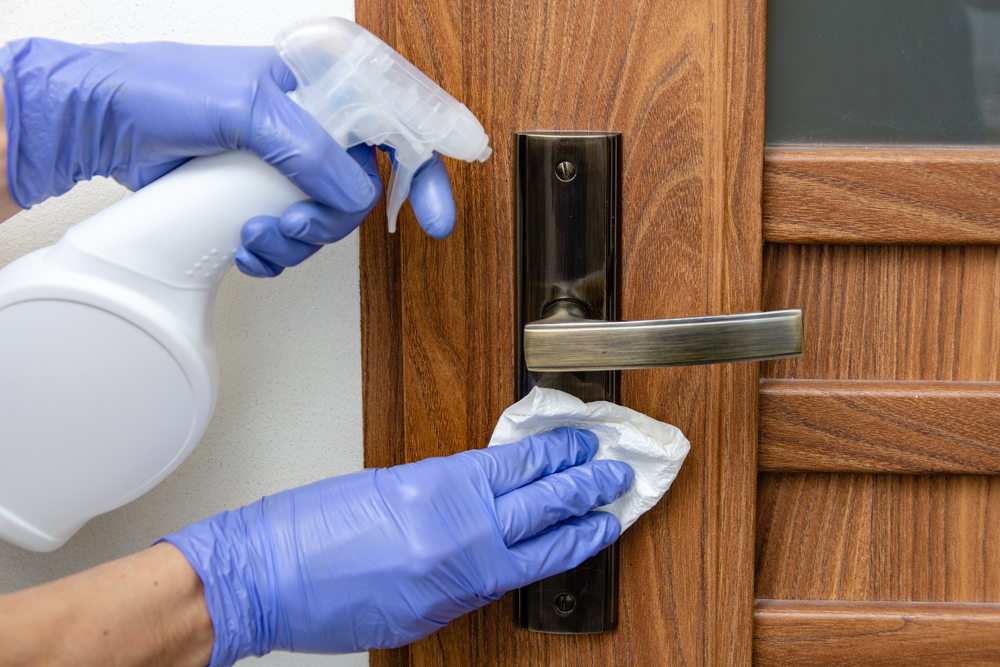Back to Basics is a weekly feature that highlights important but possibly overlooked information that any EHS professional should know. This week, we examine the difference between cleaning, disinfecting, and sanitizing.
It’s important to properly clean, disinfect, and sanitize to make buildings healthy. There is some confusion among the three terms, but it’s important to focus on cleaning and disinfecting unless your facility or local, state, or federal law requires sanitization.
Regarding cleaning and disinfecting, facilities management professionals should make determinations on how they will properly maintain an area based on several factors, including the number of people using this portion of the facility, whether there have recently been sick people who visited the facility, the general vulnerability of people using the facility, and what type of materials are in the facility that needs to be cleaned.
Cleaning
It’s important for facilities management personnel to properly clean workplaces. Cleaning is defined as using water and soap or detergent to reduce germs on surfaces and remove dirt, dust, and crumbs. Cleaning once a day helps maintain a healthy facility, according to the Centers for Disease Control and Prevention (CDC). However, high-touch surfaces, in high-traffic areas, should be cleaned more frequently.
For soft surfaces, such as carpets, rugs, and drapes, facilities management professionals should follow the manufacturer’s instructions, which could include using specific cleaners or detergents. Clothing, towels, and linens should be cleaned using warm water with detergent and dried completely. Gloves and masks should be worn if cleaning clothing, towels, and linens from someone who is sick. Electronic devices can safely be cleaned by using wipeable covers.
Facilities management professionals should wash their hands before and after cleaning, disinfecting, and sanitizing any surface. The CDC recommends using soap and water for 20 seconds or using hand sanitizer with 60% alcohol to clean hands.
Disinfecting
The National Library of Medicine defines disinfecting as the use of chemicals, or disinfectants, to kill germs on objects, which is more effective than cleaning that just reduces germs. Facilities management professionals should leave disinfectants on objects for a specific period to kill the germs.
CDC says that disinfecting is encouraged for:
- High-traffic areas
- Areas with poor ventilation
- Areas with no access to handwashing or hand sanitizer
- Areas occupied by people over the age of 65 and those with serious medical conditions
Disinfecting, according to the CDC, means using a product with an ID number on the U.S. Environmental Protection Agency’s (EPA) List N disinfectants. A few of these include Quaternary Ammonium Compounds (QAC), hydrogen peroxide, and chlorine compounds.
Sanitizing
Facilities management professionals should sanitize surfaces to further reduce the number of germs to a safe level. The safe level depends on the public health standards or requirements of the facility. Examples include requirements for restaurants, medical facilities, and daycare centers. Most facilities management professionals will not need to worry about sanitization unless they work in a field or a facility that specifically requires it.
When to Both Disinfect and Clean
It’s best for facilities management personnel to combine disinfecting with cleaning as disinfecting alone may not be enough to clean dirty surfaces or remove all germs.
The CDC advises facilities management professionals to clean and disinfect facilities where a sick individual has visited in the past 24 hours. After a sick person has left an area for 24 hours, the CDC advises only cleaning is needed except for high-traffic areas, areas with poor ventilation, areas with no hand washing or hand sanitizing options, and areas visited by those most vulnerable.
It is safe to clean and disinfect surfaces while taking some precautions from the U.S. Department of Health and Human Services:
- Store all substances in containers they came in
- Do not put cleaners and disinfectants together unless labels indicate otherwise
- Do not mix bleach and ammonia, which creates a toxic gas called chloramine
- Consult with product labels regarding use of eye protection or gloves when using products
Alternative Disinfection Methods
Alternative surface disinfection methods, like ultrasonic waves, high-intensity ultraviolet (UV) radiation, and light-emitting diode (LED) blue light, are other options to adequately clean surfaces.
- Ultrasonic wave cleaning uses high-frequency, high-intensity soundwaves in a liquid to help remove containments.
- High-intensity UV radiation destroys the deoxyribonucleic acid (DNA) inside bacteria, viruses, and fungi and is used to disinfect industrial surfaces and sanitize drinking water.
- LED blue light can kill bacteria, fungus, and mold.
The CDC cautions that other methods such as fogging, fumigation, and wide-area or electrostatic spraying have several safety risks to consider and should not be used as primary methods of surface disinfection. The EPA only recommends products that have specific instructions on their bottles that spell out how to use those products. Facilities management professionals are encouraged to do their research regarding the method that would work best for their needs.
This article is part of Facilities Management Advisor‘s Healthy Buildings Week 2022. For more information on the event, please click here.

